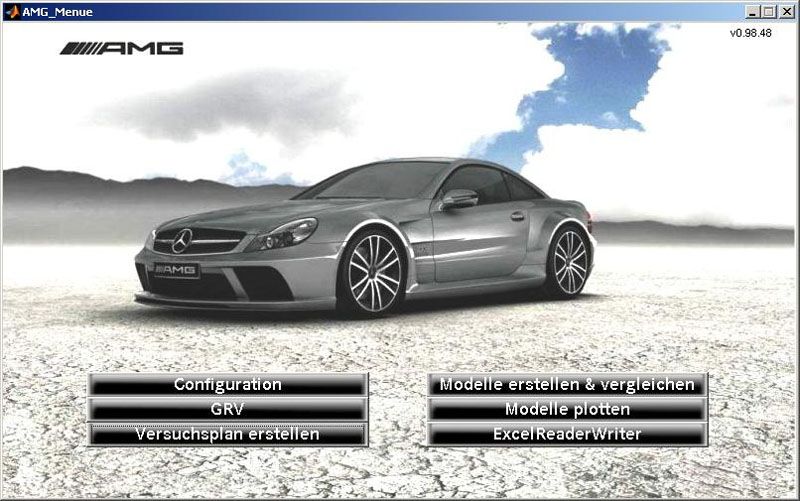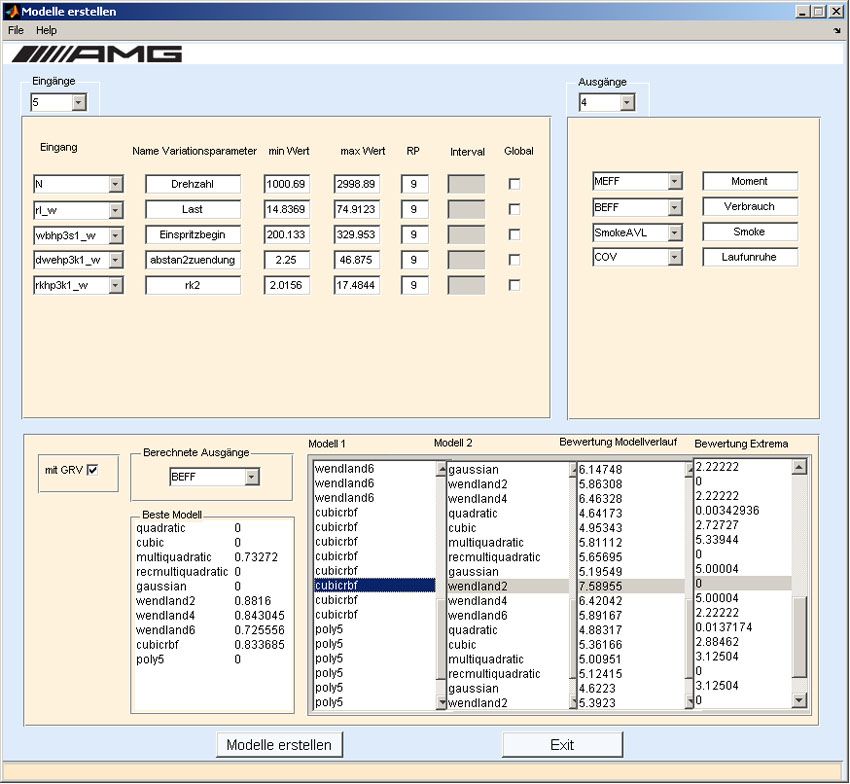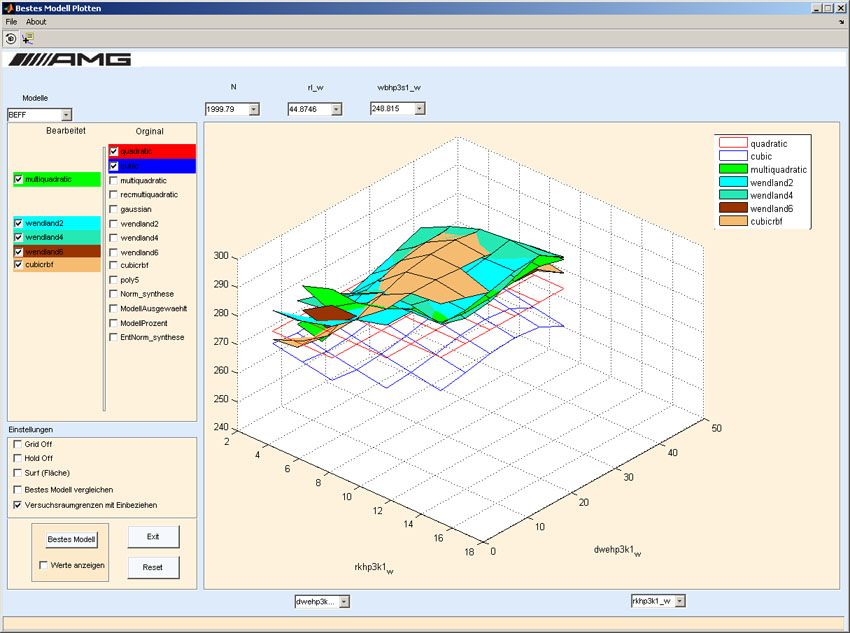Calibration of Engine Performance at Mercedes-AMG
By Hasan Uzun, Mercedes-AMG GmbH
Optimized engine calibration is critical to Mercedes-AMG’s ability to design powertrains that combine dynamic performance and environmental responsibility. The calibration of today’s complex, high-degree-of-freedom engines can be challenging even for the most experienced automotive engineers. There are too many variable combinations to test individually, and tradeoffs among performance, efficiency, emissions, and reliability are complex.
At AMG, we developed a custom engine calibration tool using MATLAB®, Model-Based Calibration Toolbox™, and Parallel Computing Toolbox™ that enables engineers at all levels of expertise to extract the highest possible performance from AMG powertrains (Figure 1). The tool supports the entire calibration process, from Design of Experiments, through model generation and selection, to optimization.
Applying the Design-of-Experiments Methodology
Engine performance depends on precise control of a large number of engine control parameters. For example, today’s engine control units (ECUs) enable multiple injections per engine cycle, each with different amounts of fuel, adding more parameters to the problem. Engine calibration involves tuning these variables and others to maximize performance across the operational range of engine speeds and loads.
Because the effects of calibration variables are interdependent, it is impossible to calibrate an engine by simply optimizing one variable at a time. However, because there may be a dozen or more variables, each with a range of possible values, it is not feasible to test all possible combinations on a working engine.
The Design of Experiments (DoE) methodology addresses this problem by generating test plans that efficiently determine the nature of the engine responses. The tool we developed lets engineers without any specialized knowledge apply DoE methodology as part of AMG’s comprehensive calibration process.
Building a Custom Calibration Tool
Developing the calibration tool was a three-stage effort. In the first stage, we established robust design, modeling, and optimization processes for systematically calibrating an AMG engine using the Model-Based Calibration Toolbox GUI.
Once those processes were in place, we used the Model-Based Calibration Toolbox command-line interface to capture the steps in MATLAB functions. We wanted to provide an application tailored to the specific inputs of our workflow and the specific requirements of our calibration engineers. For this reason, in the third stage we used MATLAB to create a custom GUI that invokes Model-Based Calibration Toolbox via the command-line interface (Figure 2). Generating and evaluating candidate engine models is a computationally intensive calibration task that can take several minutes to process. To accelerate this step, we used Parallel Computing Toolbox to take advantage of the processing power available in all the dual-core workstations at AMG. This straightforward change gave MATLAB access to both CPUs, enabling our team to perform their modeling calculations about 1.7 times faster than before.
The Calibration Workflow
The new calibration tool has streamlined and simplified the calibration process at AMG. Even engineers with no previous knowledge of the DoE methodology are using the tool and getting excellent results.
The engineers first enter known variable limits, such as minimum and maximum fuel injection quantities (measured in milligrams per injection) and the spark timing range (measured in degrees crankshaft). The interface asks only for the information we need for AMG engines, in terms understood by AMG engineers. The tool invokes Model-Based Calibration Toolbox to generate a minimal set of test points to be run on an engine dynamometer. Having evaluated a number of experimental design types, including full factorial, central composite, and Latin Hypercube, we have settled on a custom approach that combines space-filling and optimal techniques.
Next, the engineers bring the test data— including measurements of torque, emissions, and fuel consumption—back into the tool, which again invokes Model-Based Calibration Toolbox to generate engine models (Figure 3).
Finally, the tool uses Model-Based Calibration Toolbox to optimize calibration settings across a range of engine speed and load values. For example, we specify an emissions limit to meet regulatory requirements and a fuel consumption limit to meet our environmental goals, and then optimize torque for performance. Model-Based Calibration Toolbox solves these large constrained optimization problems and produces lookup tables ready for export to the ECU.
Building Greener Performance Cars
MATLAB and the command-line interface of Model-Based Calibration Toolbox have enabled us to implement a solution that fits seamlessly into AMG’s existing calibration workflow. Our specialized calibration tool is helping AMG to achieve its Euro 6 compliance goals. The DOE methodology and multicore parallelization of computationally intensive statistic modeling and optimization tasks have accelerated the process.
AMG engineers used the tool as part of the calibration process for the new Mercedes-Benz SLS AMG. This sports car’s 6.3-litre, V8 AMG engine delivers 420 kW/571 hp peak output at 650 Nm of torque (all values are provisional). The Gullwing model (Figure 4) accelerates from 0 to 100 km/h in 3.8 seconds. Precise calibration contributed to the car’s best-in-class fuel consumption of 17.8 mpg (13.2 liters per 100 kilometers).

A primary advantage of using the custom calibration tool on the Mercedes-Benz SLS AMG and other projects is that it is tailored to AMG’s specific needs and existing calibration process. As a result, AMG engineers and technicians can focus on the specifics of AMG engines in a streamlined calibration process.
Published 2010 - 91846v00


